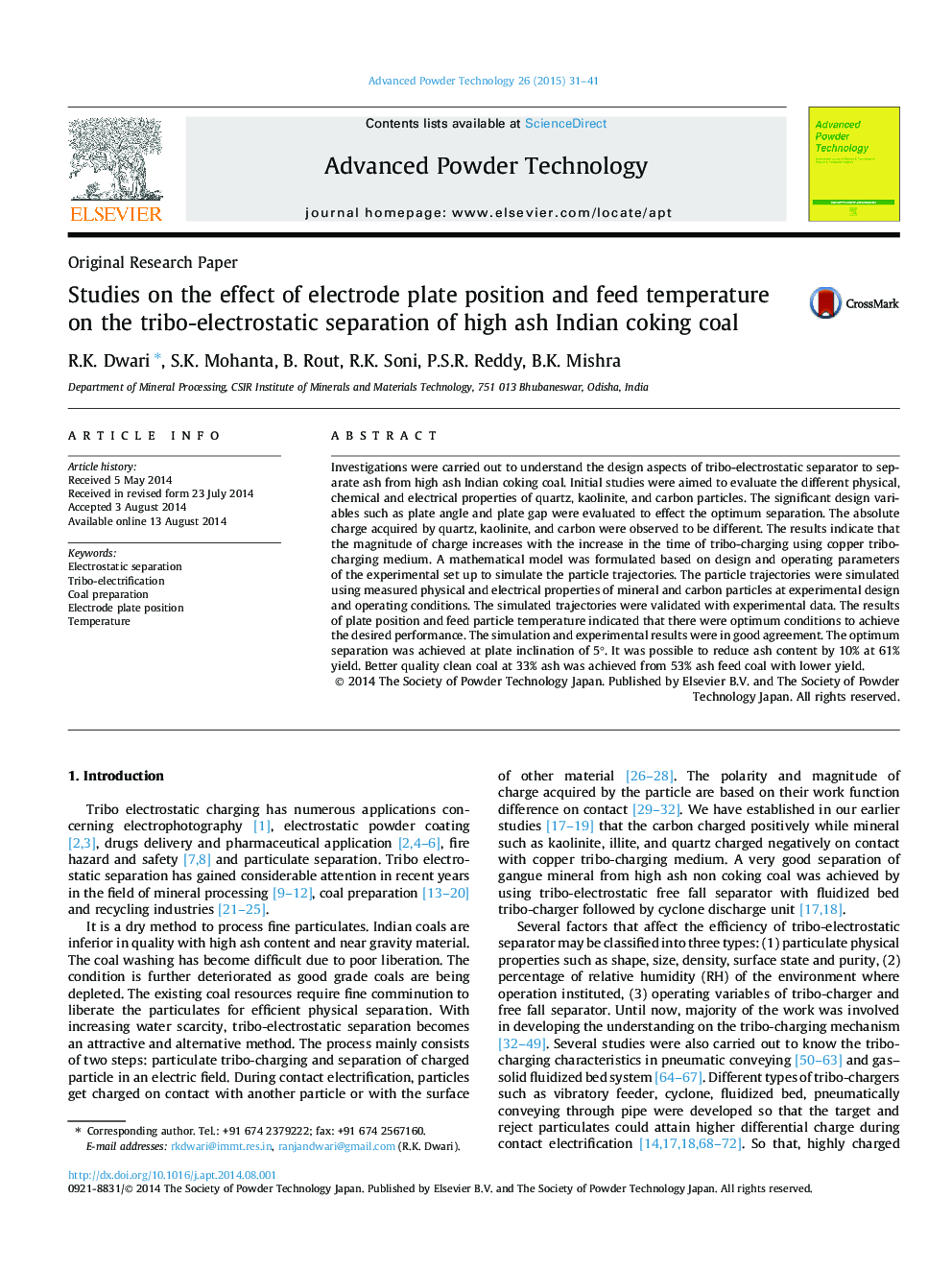| Article ID | Journal | Published Year | Pages | File Type |
|---|---|---|---|---|
| 144625 | Advanced Powder Technology | 2015 | 11 Pages |
•Electrode position on tribo-electrostatic separation of coking coal was studied.•Particle trajectories were simulated at different electrode plate position.•Experimental and simulation results are in good agreement.•Optimum separation achieved at 5° plate inclination and 105 °C feed temperature.•A 10% reduction of ash on reject coking coal was achieved with 61% yield.
Investigations were carried out to understand the design aspects of tribo-electrostatic separator to separate ash from high ash Indian coking coal. Initial studies were aimed to evaluate the different physical, chemical and electrical properties of quartz, kaolinite, and carbon particles. The significant design variables such as plate angle and plate gap were evaluated to effect the optimum separation. The absolute charge acquired by quartz, kaolinite, and carbon were observed to be different. The results indicate that the magnitude of charge increases with the increase in the time of tribo-charging using copper tribo-charging medium. A mathematical model was formulated based on design and operating parameters of the experimental set up to simulate the particle trajectories. The particle trajectories were simulated using measured physical and electrical properties of mineral and carbon particles at experimental design and operating conditions. The simulated trajectories were validated with experimental data. The results of plate position and feed particle temperature indicated that there were optimum conditions to achieve the desired performance. The simulation and experimental results were in good agreement. The optimum separation was achieved at plate inclination of 5°. It was possible to reduce ash content by 10% at 61% yield. Better quality clean coal at 33% ash was achieved from 53% ash feed coal with lower yield.
Graphical abstractFigure optionsDownload full-size imageDownload as PowerPoint slide
